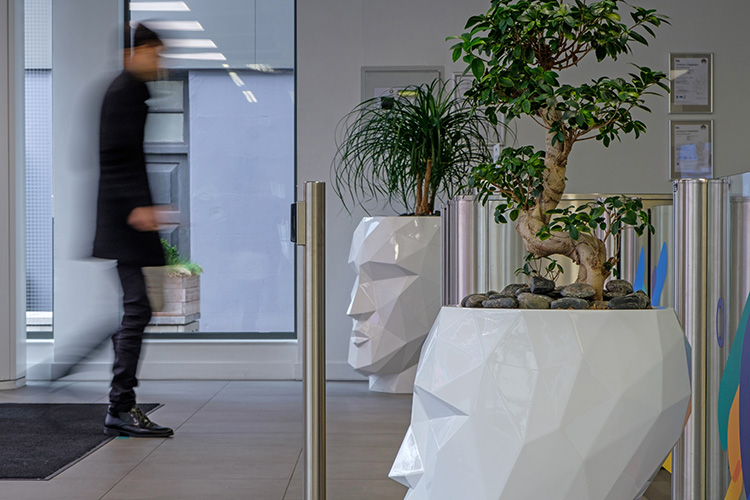In the evolving world of education design, the bursar’s role has never been more crucial. As the financial and administrative backbone of independent schools, bursars are uniquely positioned to influence the direction and ethos of their institutions. One area where their influence is becoming increasingly significant is in the realm of biophilic design. But what exactly is biophilic design, and why should it matter to independent school bursars?
Understanding Biophilic Design
Biophilic design is a concept rooted in our intrinsic connection to nature. The term ‘biophilia’, coined by biologist E.O. Wilson, describes the innate human tendency to seek connections with nature and other forms of life. Biophilic design, therefore, is about integrating these natural elements and processes into the built environment, particularly in places where we learn, work, and live.
In the context of education, biophilic design principles aim to create learning environments that are not only functional but also inspire and connect students to the natural world. This is achieved through both direct and indirect experiences of nature, from the inclusion of plants and water features to the use of natural materials and patterns.
Why Biophilic Design Matters in Education
Recent studies have shed light on the profound impact of biophilic design on educational outcomes. According to research by the Terrapin Bright Green consultancy, spaces that incorporate biophilic elements can lead to an 8% rise in learning rates, a 13% increase in tasks performed well, and a notable 7.8% reduction in absenteeism.
Furthermore, a study from the University of Illinois highlighted that students with a view of greenery from their classroom windows not only performed better academically but also exhibited higher levels of attention and concentration. These findings are particularly pertinent for independent schools, where the pursuit of academic excellence and holistic development is paramount.
The Bursar’s Integral Role in Championing Biophilic Design
- Strategic Financial Planning: As stewards of the school’s finances, bursars have the responsibility and authority to allocate funds towards biophilic initiatives. This could range from budgeting for indoor green walls and gardens to investing in sustainable materials for new buildings or renovations.
- Infrastructure and Development: Bursars often collaborate with architects, designers, and contractors during the planning and construction phases. By advocating for biophilic design principles, they can ensure that new infrastructural projects, whether it’s a new science block or a library extension, prioritise elements like natural light, green spaces, and sustainable materials.
- Maintenance and Sustainability: Biophilic design isn’t a ‘set it and forget it’ proposition. It requires consistent care and maintenance. Whether it’s ensuring the health of indoor plants, maintaining water features, or replacing natural materials when needed, bursars must ensure there’s a dedicated team and budget for these tasks.
- Collaboration with Educational Leaders: Bursars should actively engage with headteachers, department heads, and educational planners. By understanding the curriculum and the pedagogical goals of the school, bursars can better align biophilic design elements to enhance learning experiences. For instance, a garden might not just be a relaxation spot but could double up as a hands-on learning space for biology or environmental science lessons.
- Training and Awareness: For the full benefits of biophilic design to be realised, the entire school community, from teachers to support staff, needs to be on board. Bursars can champion training sessions, workshops, and awareness campaigns that elucidate the principles, benefits, and best practices of biophilic design.
- Promoting Environmental Stewardship: Beyond the immediate benefits of enhanced learning outcomes and well-being, biophilic design also offers an opportunity for schools to instil values of environmental responsibility and sustainability in students. By visibly prioritising nature and sustainability, schools send a strong message about their values, preparing students to be environmentally conscious citizens.
Challenges and Considerations
While the benefits of biophilic design are clear, bursars must also navigate potential challenges. These might include higher initial costs, the need for specialised maintenance, or resistance from stakeholders unfamiliar with biophilic principles. Effective communication, long-term financial planning, and continuous education will be key to overcoming these challenges.
In Conclusion
The world of education is continually evolving, and the spaces in which learning occurs play a significant role in shaping student experiences and outcomes. For independent school bursars, the move towards biophilic design represents not just a trend but a meaningful shift towards creating environments that nurture both the mind and the soul. By championing biophilic design, bursars can ensure that their institutions are at the forefront of educational innovation, offering students an environment where they can truly thrive.
If you are an Independent School Headteacher, Bursar or Estates Manager looking to transform your educational space into a thriving and creative environment where your students flourish, reach out to Exubia today.
Our team of qualified project consultants will help you throughout the process of implementing biophilic design and create an educational space for you, that inspires your students, resulting in a greener, healthier and more productive classroom environment.


Recent Comments